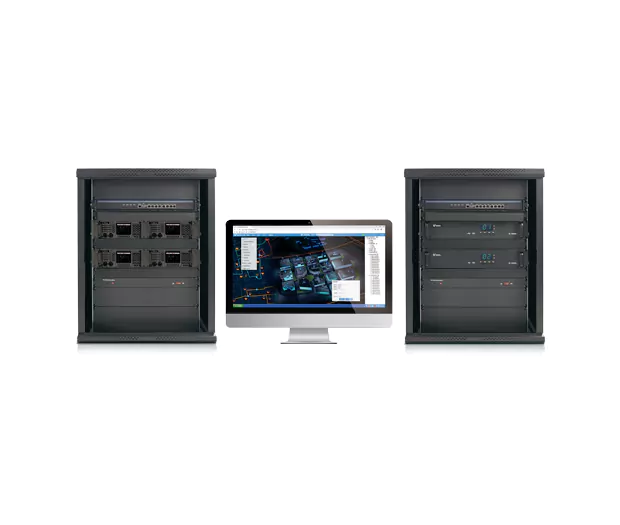SYSTEM OVERVIEW
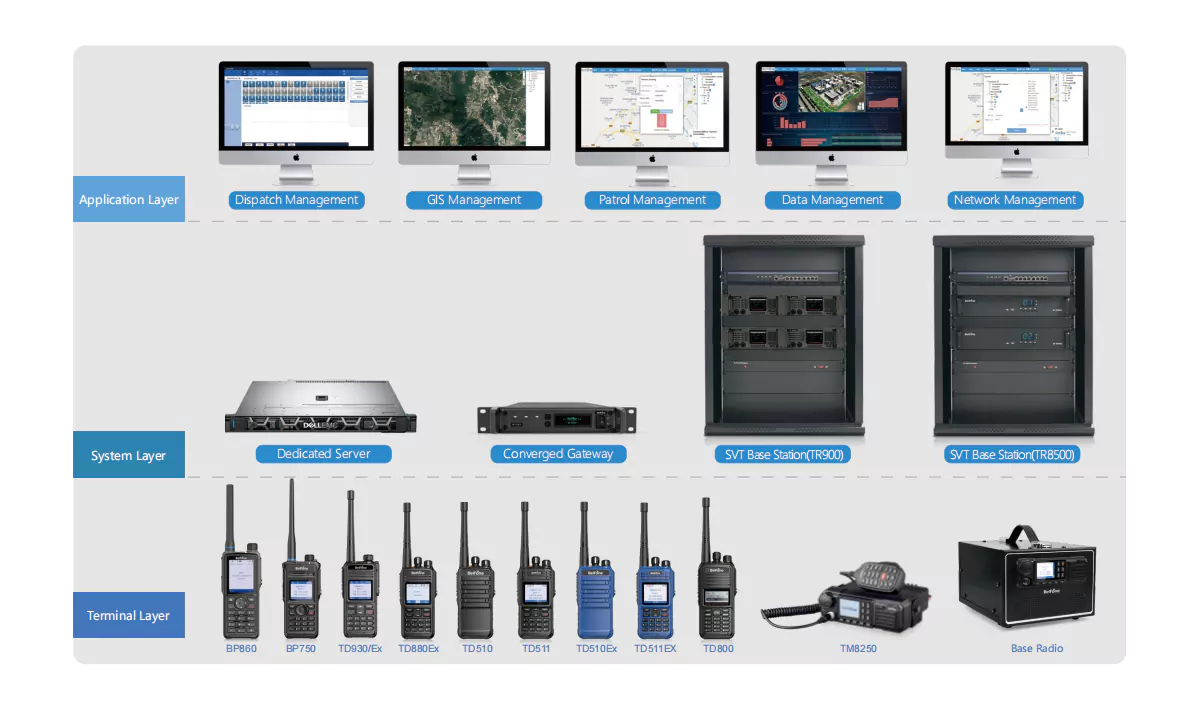
CURRENT SITUATIONS & OUR SOLUTIONS
Low Channel Utilization
Current situations: limited and unshareable channel resources make it impossible to finely group communications in concurrency tasks.
Our goals: Realize dynamic channel allocation, resource sharing, independent communication, and unified dispatching.
Simple Communication Mode
Current situations: Only simple voice communication can’t meet diverse dispatching needs.
Our goals: Build an integrated commanding and dispatching network.
Poor Communication Security
Current situations: Easy to cause mutual interference, miscommand, and misoperate due to the lack of communication security.
Our goals: Independently grouping departments to ensure the independence of departmental communications and guarantee communication privacy.
Weak Interconnection
Current situations: Traditional communication systems are weakly interconnected and cannot interoperate with telephone systems, broadcasting systems, etc., which makes it impossible to establish a collaborative communication system.
Our goals: Build an efficient communication network to connected different departments.
SYSTEM ADVANTAGES
Dynamically Allocate Channel Resources
The base station controller can effectively integrate channel resources by managing and allocating channel resources in real-time, which improves channel utilization and call completion rate.
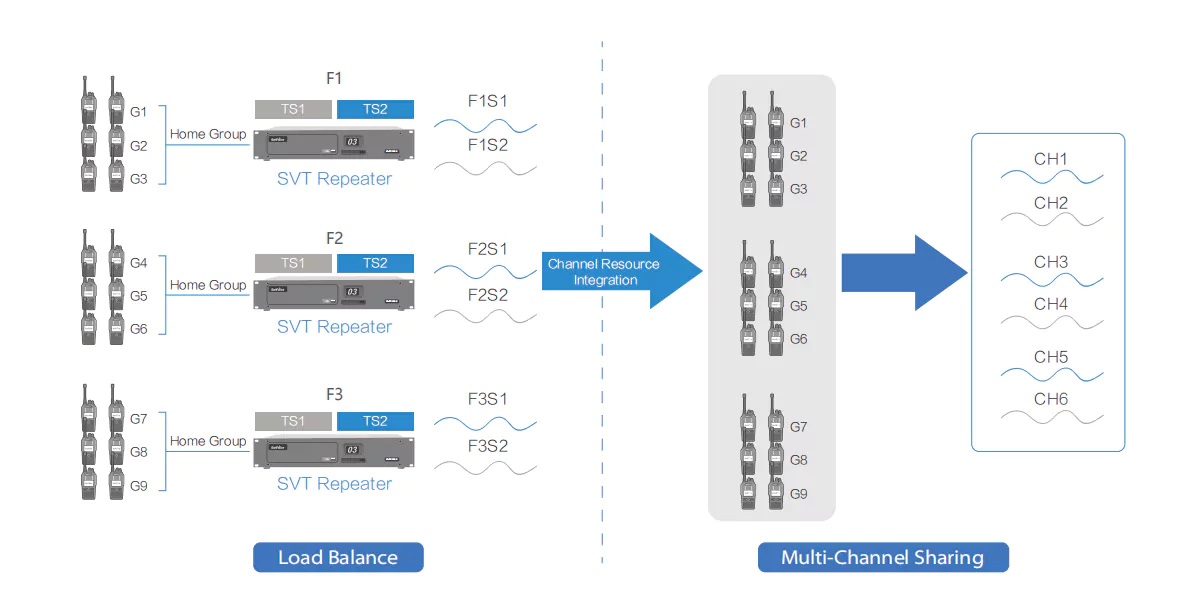
Balancing Repeater Load
SVT can assign different active groups to different repeaters evenly to dynamically allocate channel resources, effectively eliminate call collision, improve call success rate, and balance the repeater load.
Visualized Dispatching
The BF-8200(SVT) uses GIS, internet, wireless communication, and cloud-computing technologies to provide voice intercom, real-time dispatching (individual call/group call/all call, etc.), ad hoc calls, GIS, and broadcasting service, helping to
improve work efficiency and responsiveness.
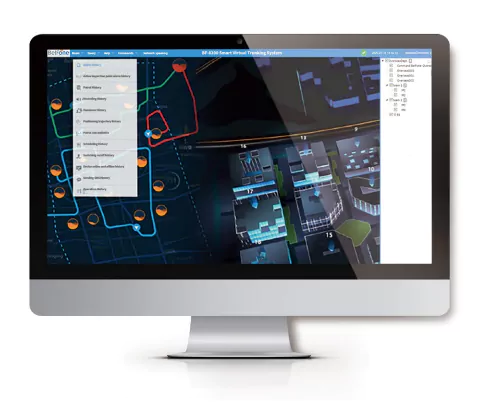
GIS Dispatching
Real-time positioning; dynamic monitoring; linkage command and dispatching, emergency alarm etc.
Interactive Dispatching
Interconnecting with analog, digital, and public-private convergence terminals to realize high-quality voice dispatching.
Voice Dispatching
Voice and information dispatching for voice calls, IP telephony, Trunking communication, broadcast calls, group calls, and SMS, etc.
Data Dispatching
The dispatching platform can unify terminals’ network access and talk-around information and remotely control the terminals.
Intelligent Digital Management
SVT can help to increase user management efficiency in a digital way. It can not only manage multiple types of data (user information, equipment information, terminal information, etc.) but also provide historical data query services for voice recording, positioning, historical tracking, patrol records, etc.
Flexible Deployment
Providing flexible deploy modes for different working environments (single station, multi-station, visual dispatching system, etc.) can not only meet daily communication needs but also can be used to carry out emergency command and dispatching.
Base Station Controller Backup
SVT supports a backup controller solution. When the master controller breaks down, the backup controller will automatically take over to ensure the system run normally.
Failure Fallback
In the multi-station interconnection mode, the SVT system can fall back to a single site mode to guarantee the running service when the master controller breaks down. Apart from that, the single site could also fallbacks to repeater mode to make sure the system runs normally when the single site controller breaks down.
Rich Applications
NETWORKING MODE
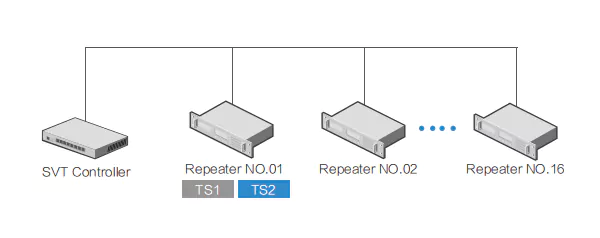
Single Site Mode
The SVT system supports multiple networking modes that can meet diverse networking requirements. The single site mode is for users with small coverage areas who only need voice calls. It is consists of an SVT controller, repeater, antenna and feeder, etc. One single site can support up to 16 repeaters.
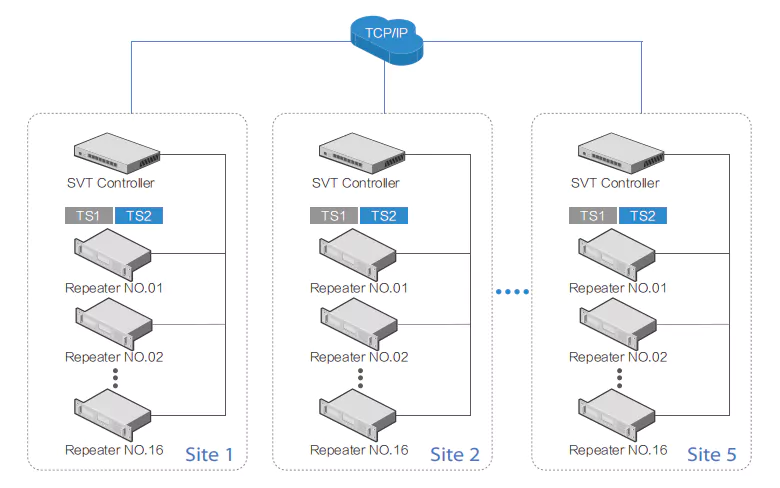
Multi-Site Interconnection
The multi-site interconnection mode is for users with wide networking coverage. It interconnected base stations in different regions by IP networking.
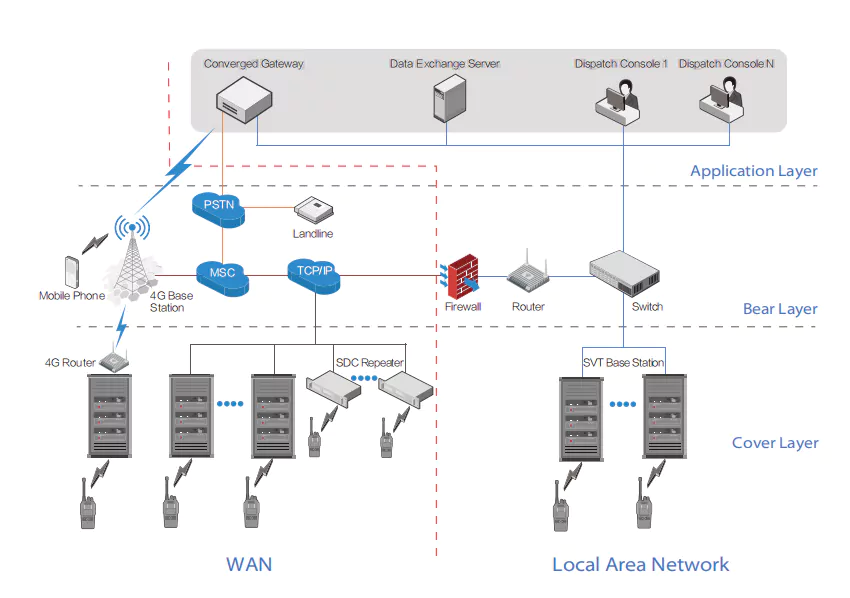
Dispatching System
SVT can access the visual dispatching system over IP network by integrating gateway to interconnect PSTN, broadcasting systems, HF systems and realize unified voice and data dispatching.



